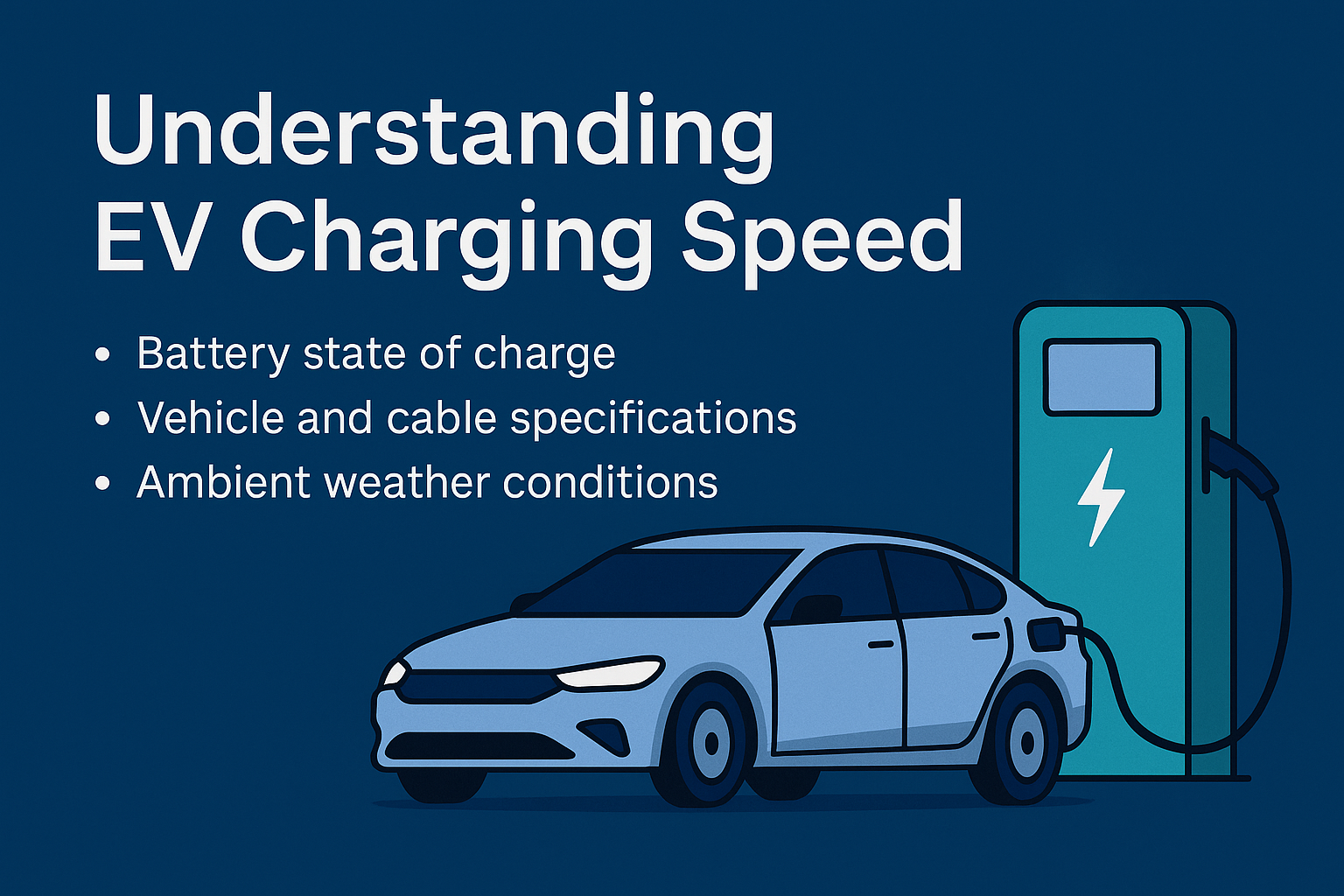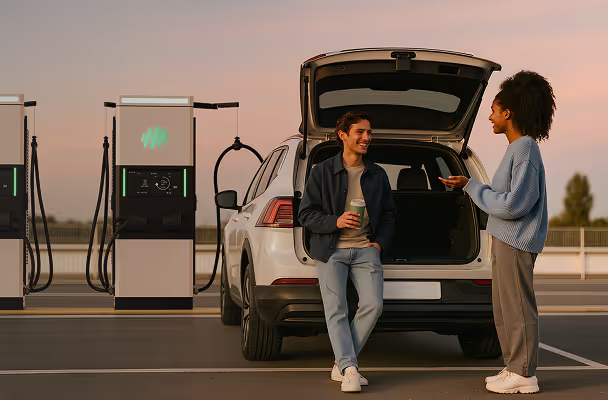Charging Speed

Charging speed refers to the rate at which an electric vehicle (EV) receives electrical energy from a charger, typically measured in kilowatts (kW). It directly affects how long it takes to recharge an EV battery.
Charging Categories by Speed
Call-Out: Charging Isn't One-Size-Fits-All
Your EV’s charging speed depends on more than just the charger. The car, battery, cable, and even the weather play a role.
Key Factors Affecting Charging Speed
- Battery State of Charge (SOC): As a battery nears full charge, the charging process naturally slows down to prevent overcharging and manage heat, which prolongs battery life and enhances safety.
- Battery Chemistry and Size: Battery type impacts charging limits. For example, Lithium Nickel Manganese Cobalt Oxide (NMC) batteries typically accept higher power than Lithium Iron Phosphate (LFP) batteries. Larger battery packs can also absorb higher power if designed for it.
- Vehicle Onboard Charger: This component determines the max AC power the vehicle can handle. A more powerful onboard charger allows faster AC charging, especially important in home or workplace setups.
- Maximum DC Acceptance Rate: This is the vehicle's threshold for accepting DC charging power. Even with a powerful charger, the EV will only draw what it's rated to handle.
- Charging Station Output: The charger's rated capacity (e.g., 22 kW, 150 kW, 350 kW) directly affects charging speed. Higher-output stations generally provide faster charging.
- Cable and Connector Specs: Thicker, liquid-cooled cables and robust connectors are needed for high-speed charging. Low-grade cables can limit current flow, reducing effective speed.
- Thermal Management: High-power charging generates heat. EVs and chargers with active cooling systems can maintain optimal performance without throttling speed.
- Ambient Temperature: Extremely cold or hot weather affects battery chemistry, leading to slower charging. Batteries may require pre-conditioning before fast charging.
- Battery Management System (BMS): The BMS intelligently regulates current and voltage to optimize charging speed while preserving battery health and safety.
Future Trends
- Megawatt Charging Systems (MCS): Emerging standard for electric trucks and buses.
- V2G and Smart Charging: EVs as grid assets for load balancing.
- AI-Powered Optimization: Intelligent load sharing and adaptive power management.
- Wireless Fast Charging: Research and pilots are underway for cable-free ultra-fast EV charging.



